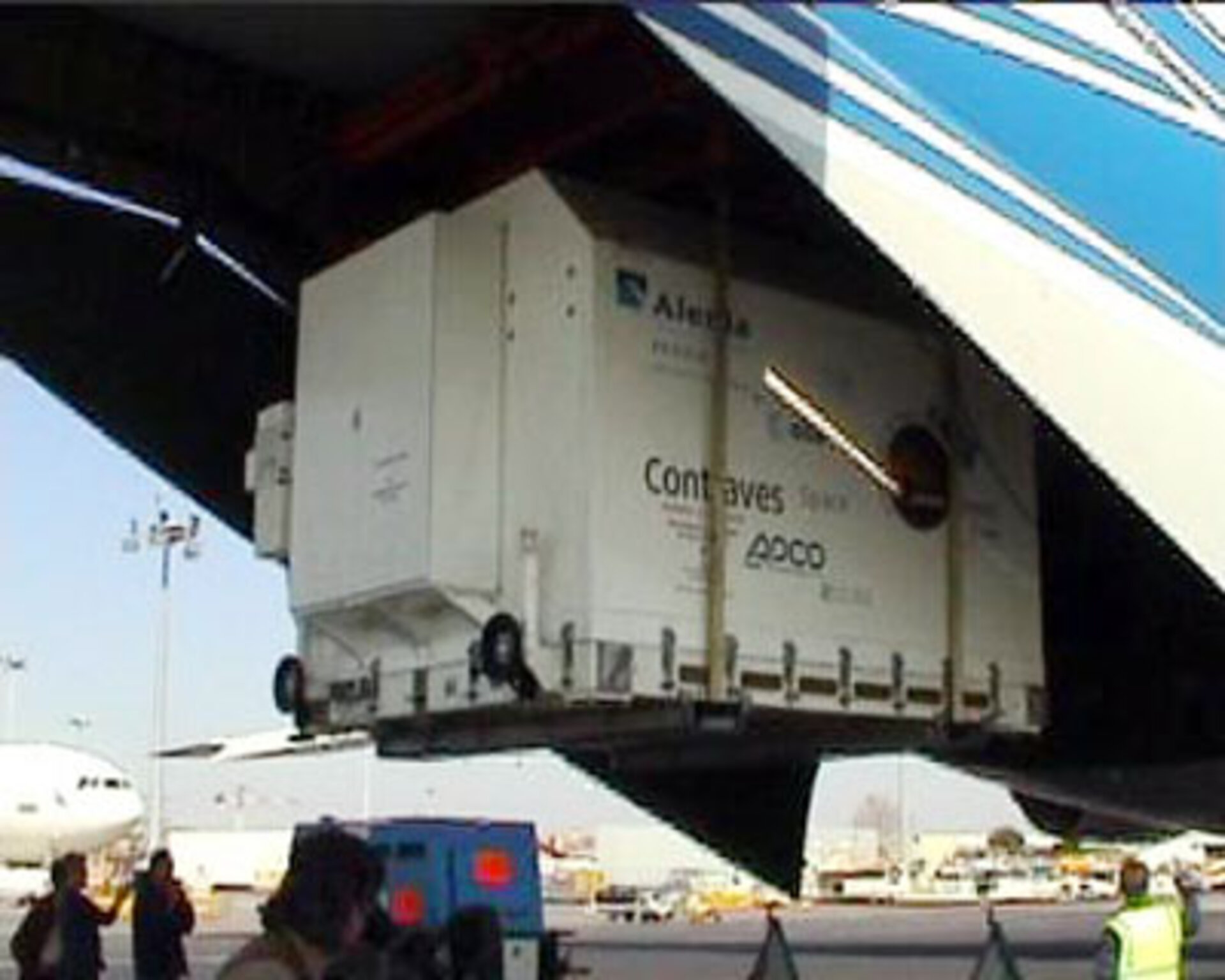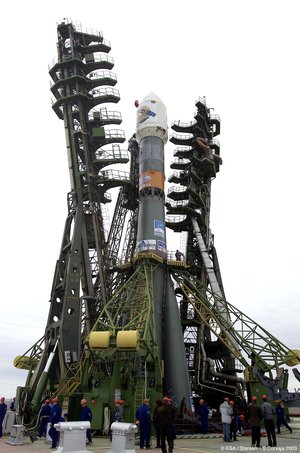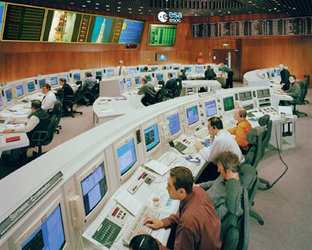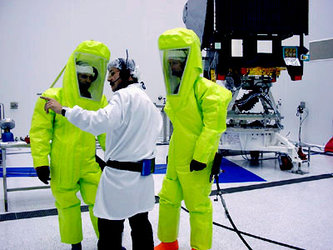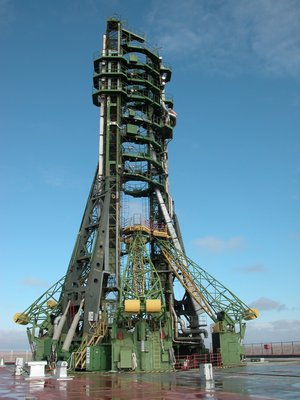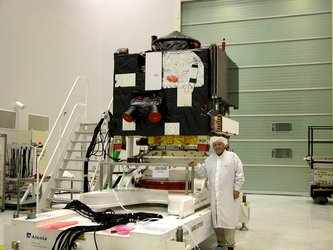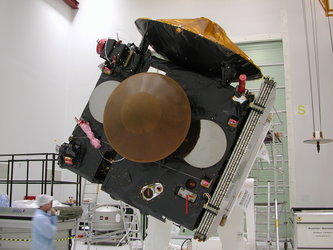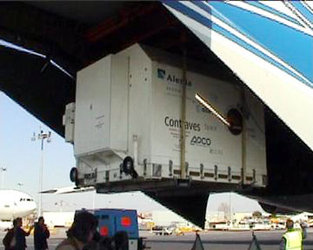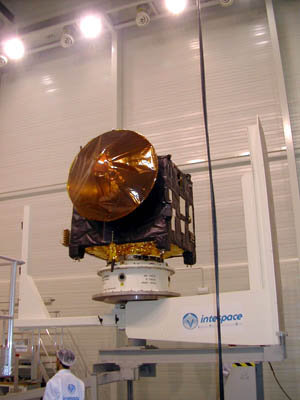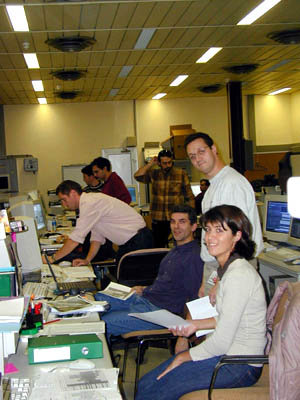"Leaving on a jet plane"
Mars Express launch diary 6
As the date for shipping the spacecraft to Baikonur gets closer and closer, Rudi Schmidt, ESA's Mars Express Project Manager, puts us in the picture on the preparations.
"So many things have to be ready at the same time. Volga-Dnepr, our cargo company, want a lot of paperwork before sending two Antonov planes to us. We have to have Mars Express spacecraft ready and packed safely in its special transport container. This means disconnecting and packing all computers and labelling mechanical support equipment for overseas containers. That's a lot of packaging lists, customs forms and invoices! It's probably easier to fly to Mars than to get 100 tonnes equipment into two planes to Baikonur!
19 March 2003, 05:00, in Paris, France.
"The hotel receptionist wakes me up. Despite a marathon meeting the night before in Amsterdam, I had just managed to get the last plane to Paris. No time for breakfast, I grab the shuttle bus, check in at the terminal, and arrive in Toulouse around 9:00.
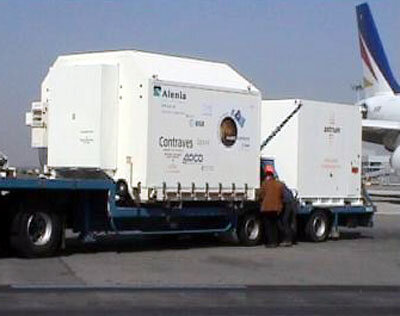
"On the apron, the pilots have just switched off their Antonov airplane engines. I realise the noise level during the flight will be awesome. About 10:00, the tail ramp opens, and the loading commences. The first overseas container, suspended from the plane's own crane, slowly disappears into the gigantic belly of the plane.
"Four hours later, they load the seventh container. Now for the most precious part of the cargo. A heavy truck pulls up, carrying the Mars Express spacecraft and the Beagle 2 containers. Everybody gathers around these containers and takes photographs. The film crews are trying to decide how to best film the loading.
"Climbing from the tarmac to the cargo level is hard enough, then I have to go up a steep, fragile, and shaking ladder. Inside, I see the cockpit (six seats tightly cramped together) and next to that, a small compartment. How on Earth are the crew, nine colleagues and I all going to fit in there?
"Fortunately, it turns out this is only for the crew; we'll be in the tail. Getting there involves a 5-metre climb up a similar, fragile ladder. Inside are our ten seats, two tables, an oven to warm our meals, and a toilet. We have to sign a safety instruction form that says that you must not drink alcohol on the plane. What are we going to do with the bottles of champagne we brought to celebrate the departure to Baikonur?
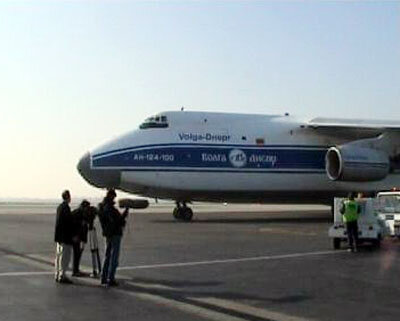
"Sitting in a plane without any visual contact with the outside is a bit scary and people seem tense. After a smooth, but noisy, five-hour flight we land in Ulyanovsk, Russia. Customs control lasts six hours. Finally, we take off for Baikonur where we land in the afternoon of 20 March 2003, after almost 14 hours in the plane.
"It's really great to suddenly see the rest of the team again. It takes some time before our crew starts to lower the tail ramp. First, I see the daylight reappear and as the ramp lowers, more and more of the landscape comes into view. Finally, I see Russian friends standing below waiting to welcome us. My colleagues wave from a distance and come up to the plane.
"I feel like crying: we made it! The spacecraft is in Baikonur, we're all here, and we're ready to start the launch campaign! Two days later the remaining 46 tonnes of equipment arrive on another Antonov.
"The European side of the operation is over. A new phase in the history of the Mars Express project is about to begin."


